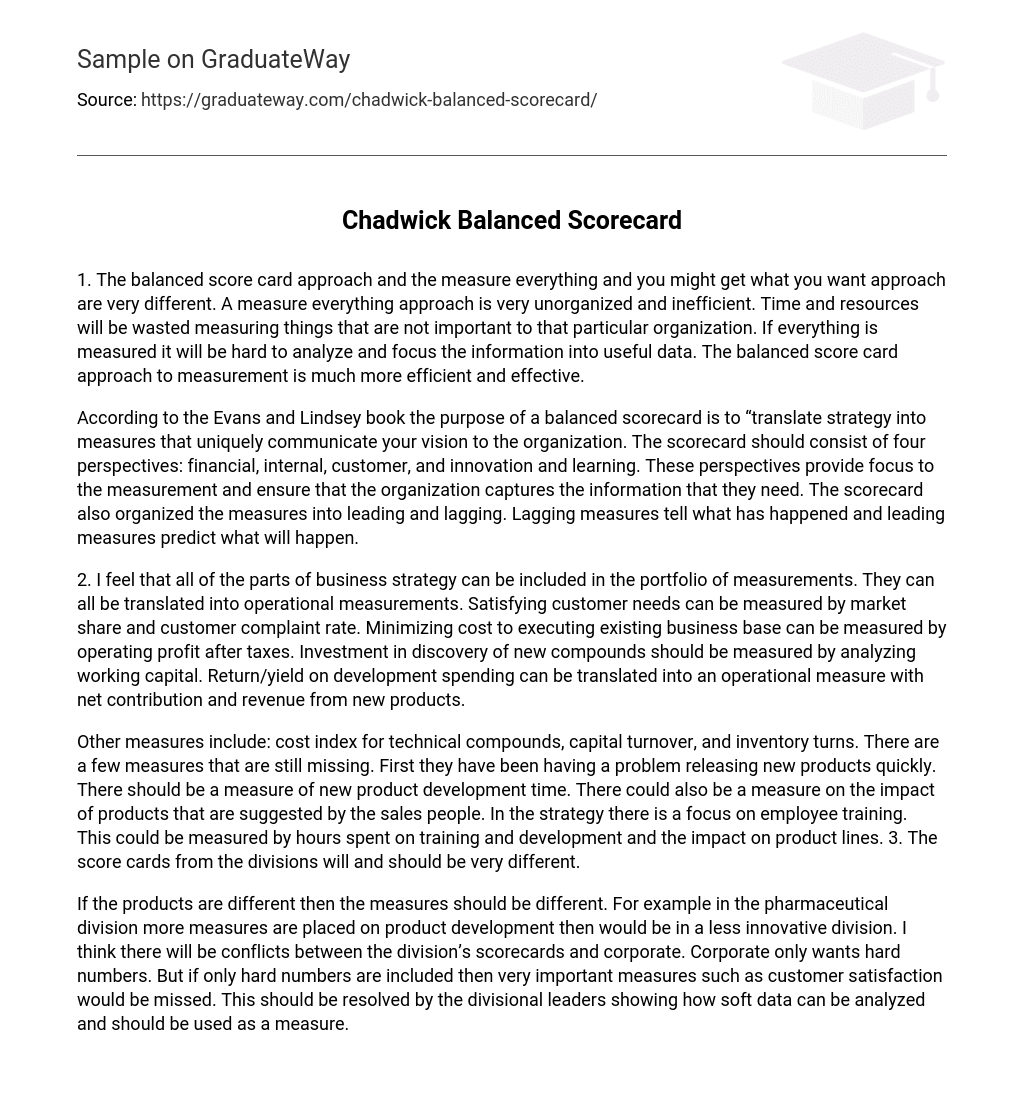According to the text, the balanced score card approach and the measure everything approach are distinct from each other in their methods. The measure everything approach can be seen as disorganized and wasteful of time and resources, as it involves measuring things that may not be relevant to the organization in question. On the other hand, the balanced score card approach is considered more efficient and effective, as it allows for focused analysis and the transformation of information into valuable data.
The main purpose of a balanced scorecard, as stated in the book by Evans and Lindsey, is to effectively communicate the organization’s vision by translating strategy into specific measures. A well-designed scorecard should include four key perspectives: financial, internal, customer, and innovation and learning. These perspectives serve to guide the measurement process and ensure that the organization captures all necessary information. Additionally, the scorecard categorizes measures into leading (predictive) and lagging (reflective) indicators. Leading measures anticipate future outcomes, while lagging measures provide insight into past performance.
2. I believe that all aspects of business strategy can be part of the portfolio of measurements. These aspects can be translated into operational measurements. Market share and customer complaint rate can measure the satisfaction of customer needs. Operating profit after taxes can measure the minimization of costs in executing the existing business base. Analyzing working capital can measure the investment in the discovery of new compounds. Net contribution and revenue from new products can translate into an operational measure for return/yield on development spending.
Other measures include: cost index for technical compounds, capital turnover, and inventory turns. In addition, there are some measures that have not been implemented yet. Firstly, we need a measure of new product development time to address the problem of slow release of new products.
Furthermore, it would be useful to have a measure that assesses the impact of products suggested by the salespeople. The strategy also emphasizes employee training, which can be evaluated by tracking the hours dedicated to training and development and examining its influence on product lines.
Lastly, it should be noted that the score cards for each division will inevitably vary significantly.
If the products vary, the measures should vary as well. For instance, in the pharmaceutical sector, there are more measures focused on product development compared to a less innovative division. I anticipate conflicts between the division’s scorecards and corporate objectives. Corporate solely emphasizes quantitative data, but excluding qualitative data would overlook significant measures like customer satisfaction. The divisional leaders need to demonstrate how to analyze and utilize soft data as a valid measure.





